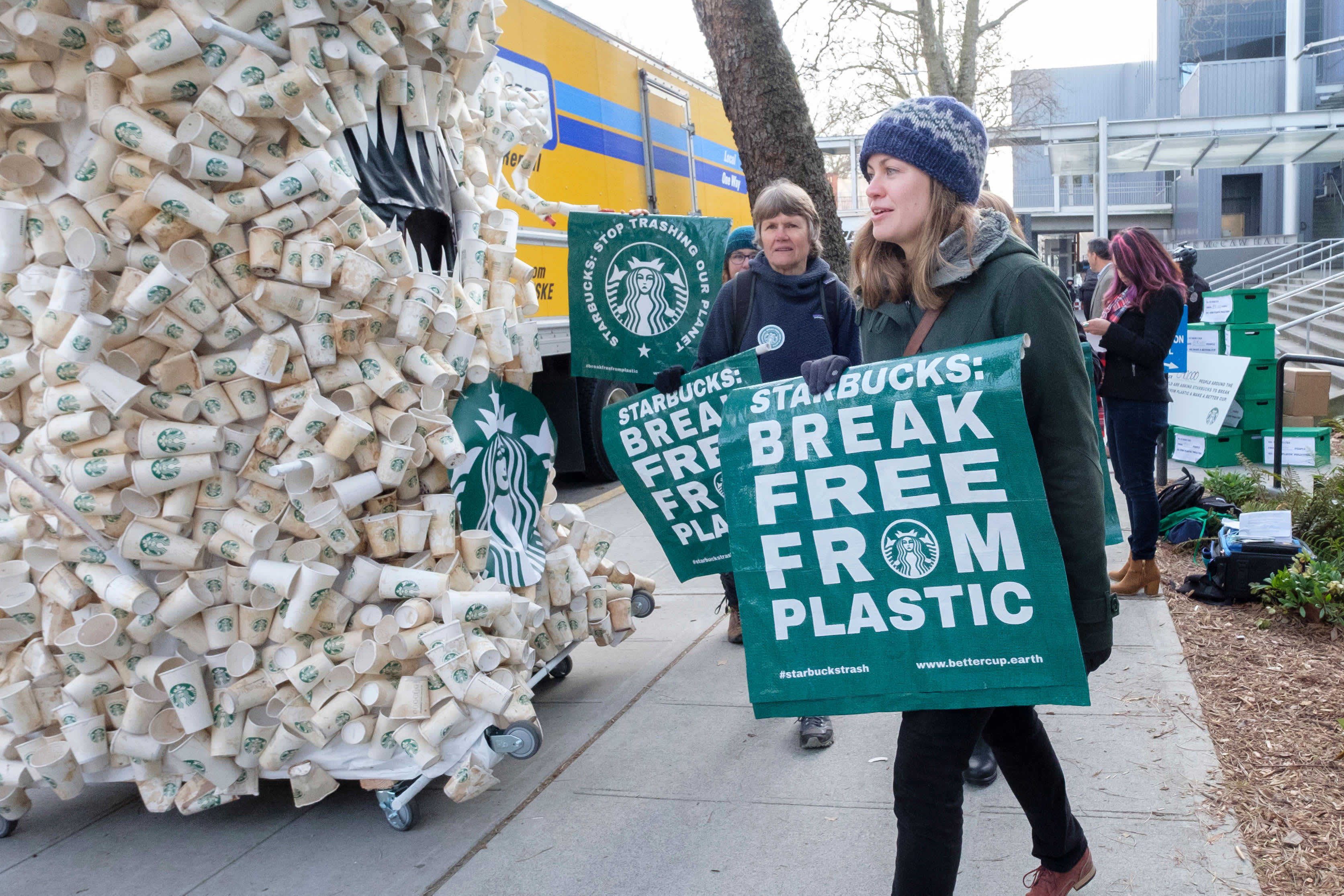When Starbucks reopened its Seattle headquarters last week, its returning workforce found that the coffee chain’s disposable paper and plastic cups had been replaced by reusable options.
It’s a change that the company is trying to bring to the rest of its cafes worldwide, which run through roughly 7 billion disposable cups every year.
Ahead of its annual shareholder meeting on Wednesday, Starbucks unveiled the latest steps it’s taking to reduce its disposable cup use. Those include more than 20 different iterations of tests across eight markets to figure out the best ways to ditch the single-use cup.
By the end of next year, Starbucks customers will be able to use their own personal reusable cups for every Starbucks order in the United States and Canada. That includes drive-thru and mobile orders, which are currently excluded.
“We’re doing so many tests to understand how that is most convenient for our customers and won’t slow the drive-thru line down for the person behind you and is also operationally friendly for our partners,” Amelia Landers, Starbucks’ vice president of product innovation, said in an interview.
The company has a broader goal to cut its waste and carbon emissions from direct operations in half by 2030 as it aims to become “resource positive” one day. And by 2025, Starbucks wants all customers to have easy access to reusable cups provided by the company or those that they bring from home.
Disposable cups and lids make up 40% of the company’s packaging waste, according to its chief sustainability officer, Michael Kobori.
“The cup is 20% of our waste footprint globally, but more than that, it is an icon,” he said. “This is Starbucks’ icon all around the world, and if we can replace this disposable cup, this symbol of waste, with this reusable, we completely change people’s mindset. And at Starbucks, we can really set an example and change the whole industry.”
But getting customers to ditch single-use cups has proved to be tricky so far for the company. Starbucks previously set a goal in 2008 to have a quarter of consumers use reusable cups by 2015, but the company fell short of that benchmark.
“What we’ve learned from our consumer research is that even the most ardent champions of sustainability really do not claim that they carry a reusable cup around with them,” Landers said.
Starbucks has offered a 10-cent discount on every order for a personal cup or mug since the 1980s, but few customers take them up on the offer. This year, the company is running different tests across the U.S. to see how coffee drinkers respond to different financial incentives and deterrents, like a 10-cent fee for single-use cups and a 50-cent discount for a reusable mug.
Starbucks is also planning to try out new cup-washing stations in cafes in O’ahu, Hawaii, and on Arizona State University’s campus. Customers will be able to have their personal cups cleaned before ordering their beverage.
The company is testing borrow-a-cup programs in Japan, Singapore and London. The designated reusable cups were designed to be returned to stores, professionally cleaned and reused by other customers. The company tested the program in Seattle already, where customers paid a deposit for every cup and received their $1 back when they returned it.
In South Korea, Starbucks has already pledged to discontinue single-use cups entirely by 2025. Four stores in Jeju and 12 locations in Seoul have already switched over to eliminating all disposable cups. Initial tests in Jeju diverted an estimated 200,000 single-use cups from landfills in the first three months, according to Starbucks.
Starbucks’ commitments to social causes, including racial justice and climate change, have made the company popular with investors who take into account environmental, social and corporate governance when picking stocks. However, shares of the stock have fallen 26% over the last 12 months as the company battles higher costs and macroeconomic uncertainties, such as the conflict in Ukraine, weigh on the broader market. Starbucks has a market value of $91.1 billion.

